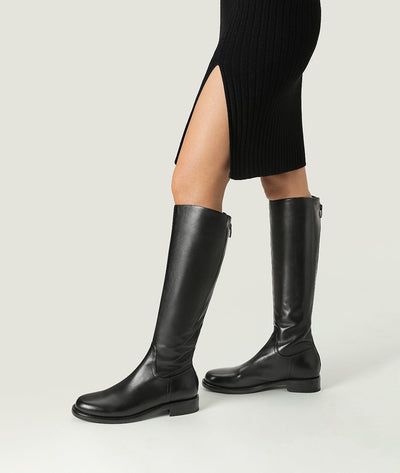Heeled boots for women have come a long way throughout history, transitioning from a functional necessity to a fashion statement. The evolution of these iconic footwear pieces reflects the changing roles and aspirations of women over time. Let's delve into the fascinating journey of heeled boots for women and explore how they have evolved from their functional origins to become a symbol of style and empowerment.
The Functional Beginnings
In the early days, heeled boots for women served a practical purpose. They were primarily worn by horse riders, providing stability and support while riding. The heels helped keep the feet secure in the stirrups, preventing accidents and ensuring a comfortable riding experience. These functional boots were often made of durable materials such as leather, designed to withstand the rigors of outdoor activities.
As women's roles expanded beyond the equestrian world, heeled boots started to gain popularity in other areas. They became a staple for working-class women who needed sturdy footwear for various manual labor jobs. The heels provided an added advantage by elevating the wearer, allowing them to reach higher shelves or navigate uneven terrain more easily.
The Rise of Fashion
With the advent of the industrial revolution and the rise of the middle class, heeled boots began to transition into a fashion item. As women gained more freedom and started participating in social activities, they sought footwear that not only served a functional purpose but also reflected their personal style.
During the Victorian era, heeled boots became a symbol of femininity and elegance. They were often adorned with intricate embroidery, lace, and decorative elements, catering to the fashion tastes of the upper class. These boots were primarily worn for formal occasions and were considered a status symbol.
The Evolution of Style
As the 20th century dawned, heeled boots underwent a significant transformation. They became more accessible to the masses, thanks to advancements in manufacturing techniques and the emergence of mass production. This accessibility allowed women from all walks of life to embrace heeled boots as a fashion statement.
The 1960s witnessed a revolution in fashion, and heeled boots played a prominent role in this cultural shift. The iconic go-go boots, with their high heels and knee-high length, became synonymous with the mod subculture and the spirit of female empowerment. These boots were a bold statement of independence and liberation, challenging traditional gender norms.
The Modern Era
Today, heeled boots for women have evolved into a diverse range of styles, catering to various fashion preferences and occasions. From ankle boots with chunky heels to sleek stiletto boots, there is a pair for every taste and outfit.
Heeled boots have become a staple in women's wardrobes, offering versatility and the ability to elevate any ensemble. They can be paired with jeans for a casual look or worn with a dress for a more formal occasion. The options are endless, and women have embraced heeled boots as a way to express their individuality and personal style.
The evolution of heeled boots for women from their functional beginnings to a fashion statement is a testament to the progress women have made in society. These boots have become a symbol of empowerment, allowing women to walk with confidence and assert their presence in any setting.
As we celebrate the evolution of heeled boots for women, let us remember the journey they have taken and the impact they have had on fashion and society as a whole.
